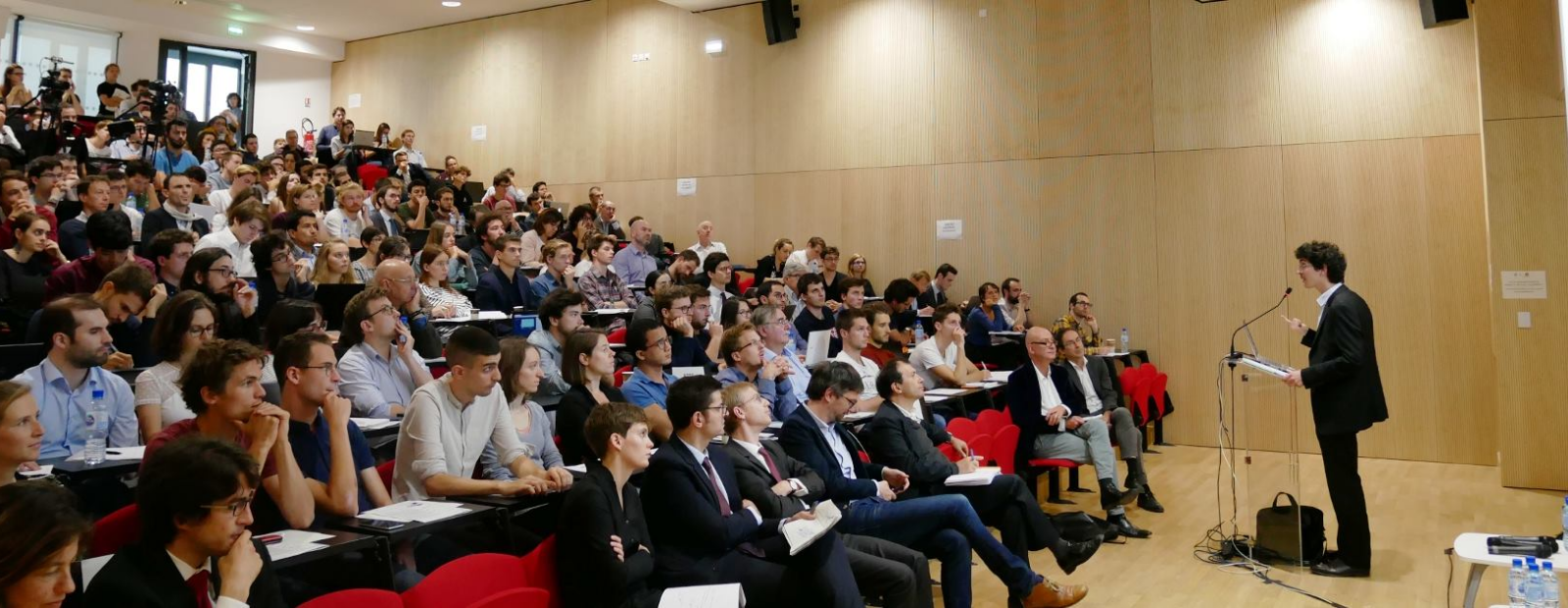Published in
- Emeritus Professor
- Paris School of Economics
- Economy wide country studies (Brazil, China, India…)
- Education
- Income and Wealth inequality
- International Trade and Trade policy
- Wealth, income, redistribution and tax policy
Address :48 Boulevard Jourdan,
75014 Paris, France
Publications HAL
-
Aid allocation with optimal monitoring: Theory and policy Journal articleJournal: Journal of Development Economics
-
Inequality Bands: Seventy-five years of measuring income inequality in Latin America Journal articleJournal: Oxford Open Economics
Published in
-
Evaluating the Distributive Incidence of Growth Using Cross‐sections and Panels Journal articleJournal: Review of Income and Wealth
Published in
-
Is the Bangladesh Paradox Sustainable?: The Institutional Diagnostic Project BooksEditor: Cambridge University Press
Published in
-
Inequality bands: Seventy-five years of measuring income inequality in latin america Pre-print, Working paper
Published in
Tabs
Actualités
- Redistribution of Income and Reducing Economic Inequality, Finance and Development, 55(1), March 2018
- Regards sur la pauvreté, in La pauvreté et l’argent, Au Fait N°8, Juillet 2018
François Bourguignon est directeur d’études à l’Ecole des Hautes Etudes en Sciences Sociales. Initialement formé comme statisticien, il a obtenu un Ph. D en économie à l’Université de Western Ontario, puis un doctorat d’Etat à l’université d’Orléans. Il a occupé le poste de directeur de l’école d’économie de Paris de 2007 à fin janvier 2013.
Ses travaux, théoriques et empiriques, portent principalement sur la distribution et la redistribution des revenus dans les pays en voie de développement et dans les pays développés. Il est l’auteur de plusieurs ouvrages et de nombreux articles dans les revues économiques internationales. Il a reçu au cours de sa carrière plusieurs distinctions scientifiques et enseigné dans plusieurs universités étrangères. Il a une riche expérience de conseil auprès de plusieurs gouvernements et d’organisations internationales. De 2003 à 2007, il a été l’économiste en chef et le premier vice-président de la Banque Mondiale à Washington.
Bibliographie
Parmi ses ouvrages récents: “The Impact of Economic Policies on Poverty and Income Distribution: Evaluation Techniques and Tools”, (avec L. Pereira), Oxford University Press, 2003. “The Microeconomics of Income Distribution Dynamics in East Asia and Latin America” (avec F. Ferreira et N. Lustig), Oxford University Press, 2005. “The Impact of Macroeconomic Policies on Poverty and Income Distribution” (avec M. Bussolo et L. Pereira), Palgrave, 2008. “Itinéraires de l’économie mondiale”, entretiens avec F. Boutin-Dufresne, Nota Bene, 2010. La mondialisation de l’inégalité, Editions Le Seuil, 2012.
- Statistician, Ecole nationale de la statistique et de l’administration économique, 1965-1968.
- DEA, Mathématiques appliquées, Université Paris-6, 1971.
- Ph. D in economics, University of Western Ontario, Canada, 1975.
- Doctorat d’Etat en économie, Université d’Orléans, 1979.
- “Merrit Brown” prize for the best thesis (Western Ontario), 1975.
- Médaille de bronze, Cnrs, France, 1982.
- Fellow of the Econometric Society, 1986.
- Chevalier de l’Ordre National du Mérite, France, 1991.
- President of the European Society for Population Economics (1995).
- El Fasi prize for development economics, ‘Association des Universités de langue française (Aupelf/Uref).
- Médaille d’argent, Cnrs, France, 1997.
- Doctor honoris causa, Université du Québec à Montréal (2001), Université de Genève (2005), University of Western Ontario, Canada, Université de Liège (2009)
- Chevalier de l’Ordre National de la Légion d’Honneur, France (2010)
- Médaille d’honneur de la Santé et des Affaires Sociales, France (2012)
-
Juan Luiz Londono Award, Latina American Economic Association Economics (2013)
-
Dan David Prize for contribution to the economics of poverty (shared with A. B. Atkinson and James Heckman, 2016)
If you are one of my student, my pedagogical ressources are online :
http://teaching.parisschoolofeconomics.eu
Development Policies in a Globalized World
This course covers the international aspects of contemporary economic development and poverty reduction in developing countries, including the various dimensions of globalization (trade, migration, capital movements and external financing, knowledge transfer, global public goods …), the potential conflicts of interest between developing and developed countries, the need for global governance and the present role of international organizations.
Année 2017-18
Italie et Europe: un drame annoncé? Les Echos, 7/6/18
Protection tarifaire: hier et aujourd’hui, Les Echos, 15/3/18
Richess et pauvreté mondiale, Les Echos, 07/02/18
Salaire minimum et inclusion sociale, Les Echos, 21/12/17
L’inquiétante augmentation de la mortalité aux Etats-Unis, 16/11/17
Quotient contre allocation familiale, Les Echose, 12/1017
RFI – 29 avril 2014
L’aide au développement aide-t-elle au développement ?
Ecouter en ligne cette interview
COLLEGE DE FRANCE – 23 février 2011
La Mondialisation des Inégalités – Invité par Pierre Rosanvallon.
Ecouter en ligne cette conférence
JECO 2010
La Gouvernance Internationale – Session d’ouverture
CFA Essec – Les Grands Entretiens
Activités non rémunérées :
– Président du Conseil d’adminsitration du LIS (Luxembourg Income Study)
– Président du Conseil d’administration de GDN (Global Development Network)
Activités rémunérées :
– Co-directeur du programme de recherche EDI (Economic Development and Institutions)
– Professeur invité NYU-Abu Dhabi

